.

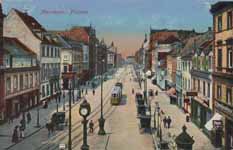
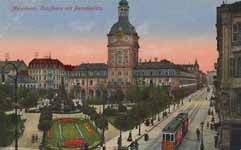
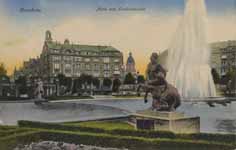
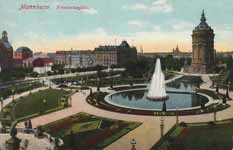
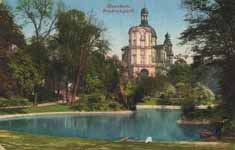


10, 11, 12,
Mannheim
Mannheim is a city in southwestern Germany. With about 315,000 inhabitants, Mannheim is the second-largest city in the Bundesland of Baden-Württemberg, following the capital city of Stuttgart.
Mannheim is located at the confluence of the River Rhine and the River Neckar in the northwestern corner of Baden-Württemberg. The Rhine separates Mannheim from the city of Ludwigshafen, just to the west of it in Rhineland-Palatinate. The border of Baden-Württemberg with the Bundesland of Hesse is just north of Mannheim, and Mannheim is just downstream along the Neckar from the city of Heidelberg. Mannheim is the largest city of the Rhine Neckar Area, a metropolitan area with about 2.4 million inhabitants.
Mannheim is unusual among German cities in that the streets and avenues of Mannheim's central area are laid out in a grid pattern, just like most North American and Australian cities and towns. Because of this, the city's nickname is "die Quadratestadt" (the German word for "city of the squares"). One main route through the streets and avenues runs by a large 18th century palace, the Mannheim Palace. This former home of the rulers of the Palatinate now houses part of the University of Mannheim.
The civic symbol of Mannheim is der Wasserturm (the water tower), an old tower that is located just east of the city's centre.
Mannheim is also the location of both the start and the finish of Bertha Benz Memorial Route.
History
Early history
The name of the city was first recorded as Mannenheim in connection with a legal transaction in the year 766, surviving in a 12th-century copy in the Codex Laureshamensis from Lorsch Abbey. The name is interpreted as "the home of Manno", where Manno is a short form of a Germanic name such as Hartmann or Hermann.[2]
Mannheim remained a mere village throughout the Middle Ages. In 1606, Frederick IV, Elector Palatine started building the fortress of Friedrichsburg and the adjacent city centre (die Stadt) – with its grid of streets and avenues. On January 24, 1607, Frederick IV gave Mannheim the status of a "city", whether it really was one by then or not.
Middle Ages
Mannheim was mostly leveled during the Thirty Years War in about 1622 by Johan Tilly's troops, and once again during the Nine Years' War in 1689 by the French Army.
After the rebuilding of Mannheim that began in 1698, the capital of the Electoral Palatinate was moved from Heidelberg to Mannheim in 1720. This was when Karl III Philip, Elector Palatine began the construction of the Mannheim Palace and the Jesuit Church. These were completed in the year 1760.
18th and 19th centuries
During the 18th century, Mannheim was the home of the "Mannheim School" of classical music composers. Mannheim was said to have one of the best court orchestras in Europe under the leadership of the conductor Carlo Grua. The royal court of the Palatinate left Mannheim in 1778, and just over two decades later, Mannheim was removed from the Palatinate and given to the Grand Duchy of Baden (in 1802).
In 1819, Norwich Duff made the following observations about Mannheim:[3]
Mannheim is in the Duchy of Baden and situated at the confluence of the Rhine and Neckar over both of which there is a bridge of boats. This is the third town of this name having been twice burnt. The houses are large, and the streets broad and at right angles to each other, and is one of the most airy clean towns I have seen in Germany. It was formerly fortified, but the fortifications were rased in 1806 and gardens fill their places. There is a large chateau here belonging to the Grand Duke and a very good garden; part of the chateau was destroyed when the town was bombarded and has never since been repaired, the other part is occupied by the Grand Duchess widow of the late Grand Duke who was succeeded by his uncle having left only three daughters. She is the sister of Eugene Beauharnais [sic, she was in fact his second cousin]. There is a cathedral, a theatre which is considered good, an observatory, a gallery of pictures at the chateau, and some private collections. About two km (one mile) below the town the Russian Army crossed the Rhine in 1813. Population 18,300.
Early 20th century and World War I
When World War I broke out in 1914, Mannheim's industry plants played a key role in Germany's war economy. This contributed to the fact that, on May 27, 1915, Mannheim had the dubious honour of being the world's first civilian settlement behind the lines to be bombed by air. French aircraft attacked the BASF plants, thereby killing twelve people and setting a precedent for the years to come.
When the war was lost for Germany in 1918, the left bank of the Rhine was occupied by French troops, according to the peace terms. The French occupation lasted until 1930, and some of Mannheim's most elegant houses were erected for the officers of the French garrison.
Inter-war period
World War II
During World War II, since Mannheim was an important industrial centre for Nazi Germany, Mannheim was heavily damaged during aerial bombing by the R.A.F. and the U.S. Air Force. In addition to bombing the important factories, the R.A.F. razed the city center of Mannheim with nighttime area bombing.
Some sources state that the first deliberate "terror bombing" of German civilians by the R.A.F. occurred at Mannheim on December 16, 1940.[4]
The Allied ground advance into Germany reached Mannheim in late March 1945, which was potentially well-defended by German forces. However, these suddenly abandoned the city and the US 44th Infantry Division entered unopposed on 29 March 1945.[5]
There has been a large American military presence in the Mannheim area ever since (see United States military installations below).
1950s to 1980s
Post-reunification
In 2007, Mannheim celebrated its 400th birthday with a series of cultural and other events spread over the whole year. The 400th birthday proper was in 2006, since Frederick IV, Elector Palatine laid the foundations of the Mannheim citadel, on March 17, 1606.
Inventions
Some important inventions were made in Mannheim.
Karl Drais built the first two-wheeled draisine in 1817.
Karl Benz' first car appeared on the streets of Mannheim in 1886. At his workshop in Mannheim he produced a lightweight three-wheeled vehicle powered by a single cylinder petrol/gasoline-fueled engine, first shown in public around 1886. This powered tricycle subsequently came to be widely regarded as the first automobile/motor car powered by an internal-combustion engine. Karl's wife Bertha Benz undertook the world’s first road trip by automobile from Mannheim to Pforzheim in August 1888.
The Lanz Bulldog, a popular tractor with a rugged, simple Diesel engine was introduced in 1921.
Julius Hatry built the world's first rocket plane in 1929.
The world’s first bicycle, built in Mannheim by Karl Freiherr von Drais in 1817
The world’s first motorcar, built in Mannheim by Karl Benz in 1885
Official sign of Bertha Benz Memorial Route, commemorating the world's first long distance journey by automobile from Mannheim to Pforzheim in 1888 104 km (65 mi)
Theatre
The "Nationaltheater Mannheim" was founded in 1779 and is the oldest "Stage" in Germany. In 1782 the premier of Die Räuber, written by Friedrich Schiller, was shown.
Climate
| Climate data for Mannheim, Germany | |||||||||||||
|---|---|---|---|---|---|---|---|---|---|---|---|---|---|
| Month | Jan | Feb | Mar | Apr | May | Jun | Jul | Aug | Sep | Oct | Nov | Dec | Year |
| Average high °C (°F) | 3 (37) |
5 (41) |
10 (50) |
14 (57) |
19 (66) |
22 (72) |
25 (77) |
25 (77) |
20 (68) |
14 (57) |
7 (45) |
5 (41) |
14 (57) |
| Average low °C (°F) | 0 (32) |
2 (36) |
3 (37) |
5 (41) |
10 (50) |
13 (55) |
15 (59) |
15 (59) |
11 (52) |
7 (45) |
3 (37) |
1 (34) |
7 (45) |
| Precipitation cm (inches) | 2 (0.8) |
2 (0.8) |
2 (0.8) |
3 (1.2) |
7 (2.8) |
6 (2.4) |
6 (2.4) |
4 (1.6) |
4 (1.6) |
3 (1.2) |
4 (1.6) |
4 (1.6) |
55 (21.7) |
| Source: Weatherbase [6] | |||||||||||||
Mannheim is located in Germany's warmest region, the "Rhine shift". In summer, temperatures sometimes rise up to 35 C° and higher. The highest recorded temperature was 41 C° during the 2003 European heat wave. The daily lows during that time were also very high (around 25 C°). In comparison to other regions of Germany, Mannheim has a higher humidity in summer which causes a higher heat index. Snow is rare, even in the cold months. Precipitation occurs mostly during afternoon thunderstorms during the warmer period (average days of thunderstorms in a year is 40–50).
Main sights
Former City Hall and St. Sebastian's Church
Mannheim University in the palace.
Jesuit Church (bevor it the former observatory)
Fernmeldeturm Mannheim
Synagogue Mannheim - imposing post-WWII synagogue
Yavuz Sultan Selim Mosque
Luisenpark – named one of the most beautiful parks of Europe
Mannheim Palace (Mannheimer Schloss) – the city castle and main building of the University of Mannheim
Wasserturm – the town's landmark water tower
Jesuit Church
SAP Arena – multifunctional Stadium, home of the Mannheim ice-hockey Team "Die Adler", which means "The Eagles."
Breite Strasse, Kunststrasse, and Kapuzinerplanken – Mannheim's main shopping destination
International Filmfestival Mannheim-Heidelberg
Wildpark and Waldvogelpark am Karlstern
The city centre, designed in squares (Quadratestadt)
Reißinsel, a natural area that an honorary citizen of Mannheim, Carl Reiß, bequeathed to the inhabitants of Mannheim
Marktplatz (Market place), this is the square where fresh farmer's market takes place every Tuesday, Thursday, and Saturday. Fresh fruits, vegetables, and flowers can be purchased.
Industry
The successor to the Karl Benz automobile manufacturing companies begun in Mannheim, Daimler AG has had a large presence in Mannheim. Today, diesel engines and buses are assembled there. The Swiss Roche Diagnostic group (formerly known as Boehringer Mannheim) has its division headquarters in Mannheim. Additionally, the city also hosts large factories and offices of ABB, Alstom, BASF (Ludwigshafen), Bilfinger Berger, Bombardier, Fuchs Petrolub AG, John Deere, Siemens, SCA, Südzucker and other companies.
U.S. Army locations
A number of U.S. Army Europe installations were located in and near Mannheim. The following locations provided services to and housed the "U.S. Army Garrison Mannheim" and other units of the U.S. Army. The U.S. Army Garrison Mannheim was formally deactived on 31 May 2011.[7]
The Benjamin Franklin Village (Mannheim-Käfertal), housing. Also, it was the home of the Mannheim American High School and the Middle School [3], which closed on June 9, 2011. It will be vacated by 2014.
Coleman Barracks and Coleman Army Airfield (Mannheim-Sandhofen) (The headquarters of the American Forces Network-Europe, and the home of the Army's 28th Transportation Battalion. Also, the location of the "U.S. Army Confinement Facility Europe". It will be vacated by 2015.
Funari Barracks (Mannheim-Käfertal), which will be vacated by 2014.
Spinelli Barracks (Mannheim-Feudenheim), which will be vacated by 2015.
Sullivan Barracks (Mannheim-Käfertal) – formerly the headquarters of the U.S. Army's 7th Signal Brigade; will be vacated by 2014.
Taylor Barracks (Mannheim-Vogelstang) – formerly the headquarters of the U.S. Army's 2nd Signal Brigade; it was vacated in 2011.
Turley Barracks (Mannheim-Kafertal?) in the early 90's was home to the 181st Transportaion Bn,with companies of 40th, 41st, 51st, 590th, TTP, and HHC transportation companies and also a light infantry unit called AMFL...
The following locations were part of the "U.S. Army Garrison Heidelberg" but were within the area of the city of Mannheim; They were vacated in 2010 and 2011:
Friedrichsfeld Service Center (Mannheim-Friedrichsfeld)
Hammonds Barracks (Mannheim-Seckenheim)
Stem Kaserne (Mannheim-Seckenheim)
All personnel of the U.S. Army military community will leave Mannheim by 2015, some of them moving to Wiesbaden. With the exception of four barracks, all other barracks formerly occupied by the U.S. military had been returned to the German state for conversion to civilian use in 2011.
Transport
Roads
Roadmap of Mannheim.
American bison at the Tierpark
The Mannheim/Ludwigshafen area is surrounded by a ring of motorways connecting it to Frankfurt in the north, Karlsruhe in the south, Saarbrücken in the west and Nuremberg in the east.
Railway
Mannheim Hauptbahnhof (central station) is at the end of the Mannheim-Stuttgart high-speed rail line and is the most important railway junction in the southwest of Germany, served by ICE high-speed train system with connections to Frankfurt am Main / Berlin, Karlsruhe / Basel and Stuttgart / Munich. A new high speed line to Frankfurt is also planned to relieve the existing Ried Railway (Riedbahn). Mannheim Harbour is the second largest river port in Germany.
Airports
Although Frankfurt International Airport is only 65 km to the north, since 2004 there have been daily passenger flights from Mannheim City Airport (IATA code MHG) to Berlin, Hamburg and Saarbrücken.
Local Public Transport
Local public transport in Mannheim includes the RheinNeckar S-Bahn, eleven tram lines and numerous bus lines operated by Rhein-Neckar-Verkehr (Rhine-Neckar transport).
The RheinNeckar S-Bahn, established in 2003, connects most of the Rhine-Neckar area including lines into the Palatinate, Odenwald and southern Hesse. All S-Bahn lines run through Mannheim Hauptbahnhof, except S5. Further S-Bahn stations are at present Mannheim-Rangierbahnhof, Mannheim-Seckenheim and Mannheim-Friedrichsfeld-Süd.
Metre-gauge trams are operated in Mannheim, Ludwigshafen and Heidelberg by Rhein-Neckar-Verkehr GmbH (RNV), a company wholly owned by the three cities mentioned and a couple of municipalities in the Palatinate. RNV is the result of a merger on 1 October 2009 between the region's five former municipal transportation companies.[8] Interurban trams are operated by RNV on a triangular route between Mannheim, Heidelberg and Weinheim, and the company also operates interurban trams between Bad Dürkheim, Ludwigshafen and Mannheim. In the 1970s a proposal to build a U-Bahn out of the Mannheim and Ludwigshafen tramways was begun, but only small sections were in fact built due to lack of funds. The only underground station in Mannheim is the Haltestelle Dalbergstraße. U-Bahn planning has now stopped. All public transport is offered at uniform prices set by the Verkehrsverbund Rhein-Neckar (Rhine-Neckar transport union, VRN).
Sport
Mannheim SAP Arena
There are two nationally renowned football clubs in Mannheim, SV Waldhof Mannheim 07, who are currently playing in the 4th tier Regionalliga Süd, but who have played in the top tier, the Fußball-Bundesliga; and VfR Mannheim, winner of the German championship in 1949, now playing in the 5th tier Oberliga Baden-Württemberg.
The Adler Mannheim (formerly MERC, Mannheimer Eis- und Rollsport-Club) are an ice hockey team playing in the professional Deutsche Eishockey Liga, having won the championship a total of six times.
The city is home to the Mannheim Tornados, the oldest operational baseball and softball club in Germany. The Tornados play in the first division of the Baseball Bundesliga and have won the championship 11 times, more than any other club.[9]
The Rhein-Neckar-Loewen (Rhine-Neckar-Lions) is a Handball team (formerly SG Kronau-Oestringen) playing in the professional German Handball League.
The WWE visited Mannheim in 2008 and grossed over half a million dollars with over 6500 fans attending the event.
Mannheim hosted the European Show Jumping Championships in 1997, and the FEI European Jumping Championships in 2007[10] 14–19 August, in the MVV-riding stadium.
Twin towns
Telecommunication tower and Luisenpark
See also: List of twin towns and sister cities in Germany
Mannheim is twinned with:
Poland Bydgoszcz, Poland
Moldova Chişinău, Moldova
Israel Haifa, Israel
Lithuania Klaipėda, Lithuania
Wales Swansea, Wales [11]
France Toulon, France
Canada Windsor, Canada
China Zhenjiang, China
Famous people from Mannheim
1762: Constanze Mozart, wife of Wolfgang Amadeus Mozart (1756–1791)
1821: Friedrich Engelhorn, founder of BASF
1856: Henry Morgenthau, Sr., United States politician and manager
1887: Emmy Wehlen Musical comedy actress and silent screen star
1897: Sepp Herberger, coach of the German national soccer team 1936–1964 ("The Miracle of Bern", world champion with his team in 1954)
1905: Albert Speer, Nazi architect, Minister for Armaments and Munitions during World War II
1939: Christiane Schmidtmer, Hollywood actress
1946: Fred Breinersdorfer, writer
1960: Norbert Schwefel, musician
1962: Uwe Rahn, football player
1969: Steffi Graf, tennis player
1971: Xavier Naidoo, pop singer
1972: Christian Wörns, football player for Borussia Dortmund and formerly Germany
1976: Bülent Ceylan, German-Turkish comedian
1977: Jochen Hecht, Buffalo Sabres National Hockey League
2012: Victoria Kesseler, Kesseler's Desginer
See also: Famous people from Mannheim (German)
References
^ "Bevölkerung und Erwerbstätigkeit" (in German). Statistisches Landesamt Baden-Württemberg. 20 July 2011.
^ Sonja Steiner-Welz, 400 Jahre Stadt Mannheim (Dokumente zur Stadtgeschichte). Band 1: bis zur Kaiserzeit, vol. 1, 2004, ISBN 9783936041965, p. 41.
^ [1]
^ Germany and the Second World War. Books.google.com. 2001-11-15. ISBN 9780198228882. Retrieved 2011-04-07.
^ Stanton, Shelby, World War II Order of Battle: An Encyclopedic Reference to U.S. Army Ground Forces from Battalion through Division, 1939-1946 (Revised Edition, 2006), Stackpole Books.
^ Weatherbase: Historical Weather for Mannheim, Germany. Weatherbase. 2007. Retrieved 2007-02-04.
^ http://www.army.mil/article/59265/Mannheim_Deactivation_Ceremony/
^ "Press release announcing the merger to form RNV (German-language)". of 23 September 2009. Retrieved 2009-10-06.
^ [2]
^ "FEI European Jumping Championship, Mannheim". Em2007.de. Retrieved 2011-04-07.
^ "Swansea - Wales :Mannheim.de". Mannheim City website. Mannheim City. 2010. Retrieved 1 March 2011.
From Wikipedia, All text is available under the terms of the GNU Free Documentation License

